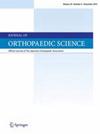Association of cirrhosis severity with outcomes after hip fracture repairs: A propensity-score matched analysis using a large inpatient database
IF 1.4
4区 医学
Q3 ORTHOPEDICS
引用次数: 0
Abstract
Background
Advanced cirrhosis is associated with increased mortality in certain surgeries, but the impact of cirrhosis severity on outcomes in patients with hip fractures remains unclear.
Methods
In a large nationwide administrative database of hospitalized patients, we compared postoperative outcomes in patients with hip fractures across different Child-Pugh classes of cirrhosis in Japan. Using the Japanese Diagnosis Procedure Combination Database, we identified 833,648 eligible patients diagnosed with hip fractures and underwent surgery between July 2010 and March 2021. Three sets of 1:1 propensity-score matching were performed for four groups: non-cirrhosis cases and Child-Pugh classes A, B, and C. We compared in-hospital mortality, length of stay, hospitalization fees, readmission, and complications in non-cirrhosis cases vs. Child-Pugh class A, Child-Pugh class A vs. B, and Child-Pugh class B vs. C.
Results
Propensity-score matching created 1065 pairs for non-cirrhosis vs. Child-Pugh class A, 1012 for Child-Pugh class A vs. B, and 489 for Child-Pugh class B vs. C. In-hospital mortality did not differ between non-cirrhosis cases and those with Child-Pugh class A. However, in-hospital mortality was significantly higher in patients with Child-Pugh class B than in those with class A (1.5 % vs. 5.9 %; RD 4.45 %; 95 % CI: 2.79%–6.10 %), and higher in patients with Child-Pugh class C compared with class B (6.3 % vs. 28.4 %; RD 22.09 %; 95 % CI: 17.54%–26.63 %). Patients in more severe Child-Pugh classes had longer hospital stays, higher hospitalization fees, and higher complication rates.
Conclusion
Patients with hip fractures and cirrhosis who are at high risk of poor postoperative outcomes could be identified. This study highlights the significantly higher in-hospital mortality observed in patients with Child-Pugh class C cirrhosis undergoing hip fracture surgery compared to those with class B. These findings underscore the need for careful risk-benefit discussions, considering the severity of cirrhosis, surgical risks, and care goals for each patient.
肝硬化严重程度与髋部骨折修补术后效果的关系:利用大型住院患者数据库进行倾向分数匹配分析。
背景:在某些手术中,晚期肝硬化与死亡率增加有关,但肝硬化严重程度对髋部骨折患者预后的影响尚不清楚。方法:在一个大型的全国住院患者管理数据库中,我们比较了日本不同Child-Pugh级别肝硬化髋部骨折患者的术后结果。使用日本诊断程序组合数据库,我们确定了833,648名诊断为髋部骨折并在2010年7月至2021年3月期间接受手术的符合条件的患者。对四组:非肝硬化病例和Child-Pugh A、B和c级进行三组1:1倾向评分匹配。我们比较了非肝硬化病例与Child-Pugh A级、Child-Pugh A级、Child-Pugh B级和Child-Pugh B级的住院死亡率、住院时间、住院费用、再入院率和并发症。倾向评分匹配为非肝硬化患者与Child-Pugh A级患者创建了1065对,Child-Pugh A级患者创建了1012对,Child-Pugh B级患者创建了489对。住院死亡率在非肝硬化患者和Child-Pugh A级患者之间没有差异。然而,Child-Pugh B级患者的住院死亡率显著高于Child-Pugh A级患者(1.5%对5.9%;Rd 4.45%;95% CI: 2.79%- 6.10%), Child-Pugh C级患者比B级患者更高(6.3%对28.4%;Rd 22.09%;95% ci: 17.54%- 26.63%)。Child-Pugh级别越严重的患者住院时间越长,住院费用越高,并发症发生率也越高。结论:髋部骨折合并肝硬化患者是术后预后不良的高危人群。这项研究强调了Child-Pugh C级肝硬化患者接受髋部骨折手术的住院死亡率明显高于b级肝硬化患者。这些研究结果强调了仔细讨论风险-收益的必要性,考虑到肝硬化的严重程度、手术风险和每个患者的护理目标。
本文章由计算机程序翻译,如有差异,请以英文原文为准。
求助全文
约1分钟内获得全文
求助全文
来源期刊

Journal of Orthopaedic Science
医学-整形外科
CiteScore
3.00
自引率
0.00%
发文量
290
审稿时长
90 days
期刊介绍:
The Journal of Orthopaedic Science is the official peer-reviewed journal of the Japanese Orthopaedic Association. The journal publishes the latest researches and topical debates in all fields of clinical and experimental orthopaedics, including musculoskeletal medicine, sports medicine, locomotive syndrome, trauma, paediatrics, oncology and biomaterials, as well as basic researches.
 求助内容:
求助内容: 应助结果提醒方式:
应助结果提醒方式:


